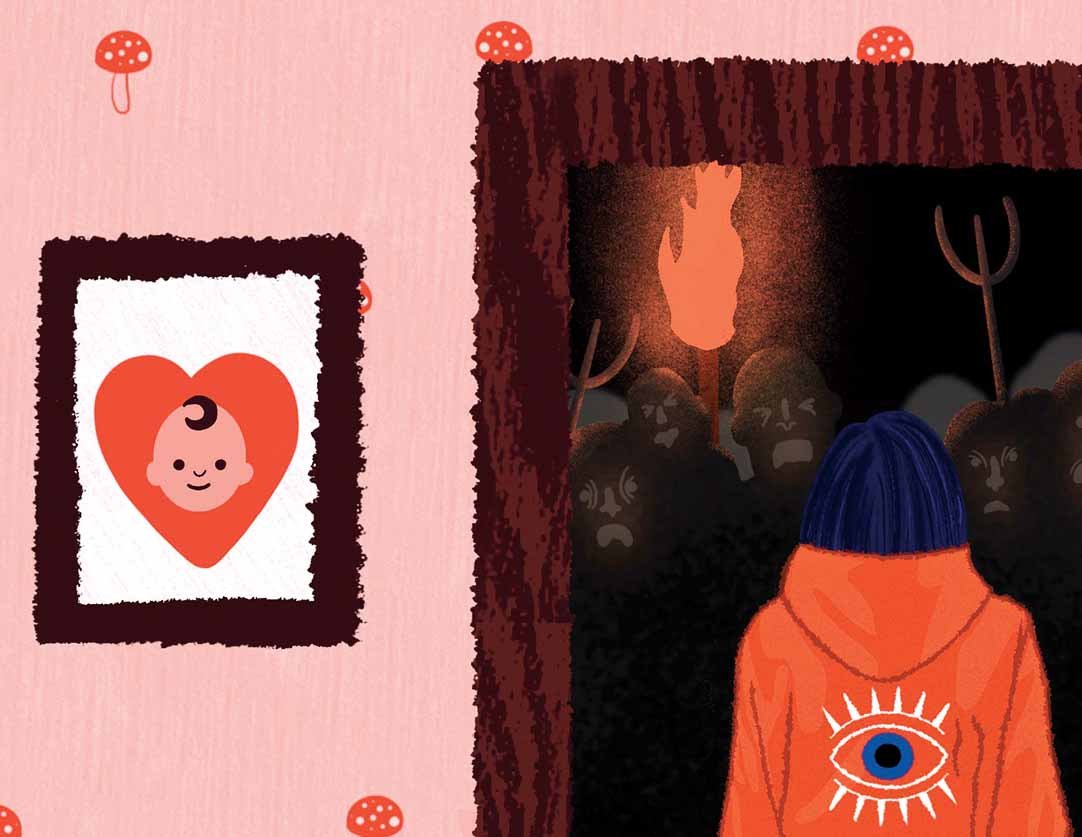
Black Annis
Share
The Dane Hills lie two miles from the centre of Leicester, now a popular residential area, but it was once the site of something much more sinister.
A small cave, now long lost, was once scratched from the earth and became home to an ogress witch, that terrorised the nearby city. The location was named, Black Annis’ Bower, after it’s inhabitant.
Black Annis was described in a poem by Lieutenant John Heyrick, a captain in Leicestshires Yeomanry Cavalry in 1794, as having a livid blue face and huge taloned hands that were befouled with the flesh of her victims.
“Tis said the soul of mortal man recoil’d,
To view Black Annis’ eye, so fierce and wild;
Vast talons, foul with human flesh, there grew In place of hands, and features livid blue
Glar’d in her visage; while the obscene waist
Warm skins of human victims close embraced.”

Image from ‘Folklore, Myths & Legends of Britain’.
She was said to have a penchant for disobedient children who strayed too far from home, that she would eat them alive, only to leave their scattered bones around her cave, and their skins to dry on the branches of nearby oak trees. Her legend was no doubt used to frighten little children into good behaviour for many years thereafter.
Also known as Black Anna or Cat Anna, who was said to pounce on people that came too close to her oak tree and cave, and that there was a subterranean passage that connected the castle in Leicester with the Dane Hills that she used to traverse the area.
Her originals are unknown, but some thought she might have been a more modern interpretation of a Celtic goddess called Anu.
Revd John Dudley said in his Naology (1846), that her association with child eating could be connected to cannibalistic rites performed in ancient Britain, although there is no evidence of this. What it is more likely that she is simply one of the many representations of hags in British folklore, such as Cailleach Bheur or the Blue Hag of the Highlands. Some even believed that Black Annis may have been an actual person, named Agnes Scott, an Anchoress, who withdrew from secular society to live a life of solitary pray. A church in Swithland commemorates her:
“This Agnes Scott, as I guess, was an Anchoress; and the word Antrix in this epitaph, coined from antrum a cave, wherein she lived; and certainly (as I have been credibly informed) there is a cave near Leicester, upon the West side of the town, at this day called Black Agnes’s Bower. ”

If this was the case perhaps the locals simply grew fearful of a strange woman living alone in the woods, and the misunderstanding leading to an unlikely tale of an evil witch who would gobble up their children should they go too far from home, of which many a tale was made the dark days gone by.
Black Annis is the inspiration for one of the short stories in my and Kirsty Logan’s new chapbook/zine that is available now.
Sources for further reading:
http://britishfolklore.com/black-annis-bower
http://crowspirit.org.uk/black-anniss-bower-by-john-heyrick/
The Lore of the Land, Jacqueline Simpson, ISBN-13 978-0141021034
Folklore, Myths and Legends of Britain, Readers Digest, ISBN-13 978-0276001680
